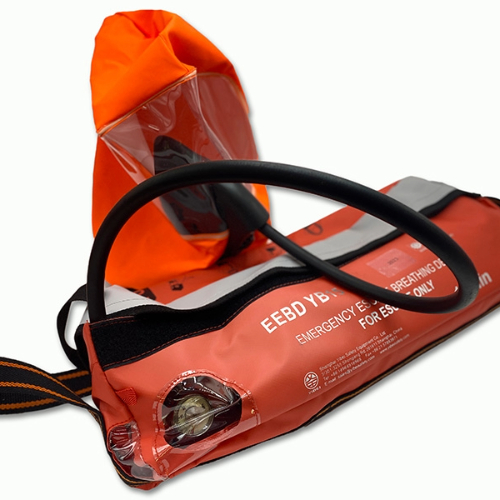
EEBD Service
Details:
1.Weekly/Monthly
Inspection (User-Level)
Visual
Check: The crew should perform a visual inspection of all EEBDs in
their designated locations.
Tamper Seal: Verify
that the tamper seal on the EEBD bag or container is intact. A broken or
missing seal indicates that the unit may have been used or tampered with, and
it must be sent for professional inspection immediately.
Pressure
Gauge Check: The pressure gauge on the cylinder should be checked to
ensure the pressure is within the manufacturer's specified range. A
low-pressure reading indicates a leak, and the unit must be removed from
service.
General
Condition: Check for any visible signs of damage, such as cracks,
abrasions, or discoloration of the bag, hood, or hose.
Documentation: Record
the weekly/monthly checks in the vessel's safety equipment log book.
2.Annual
Service (Professional Level)
Functional
Testing: A certified technician will perform a functional test to
ensure the device operates as intended. This includes checking the air supply
and verifying that the hood or mouthpiece is in good condition.
Pressure and
Leak Test: The cylinder is checked for pressure accuracy and for any
leaks in the valve or system.
Replacement
of Consumables: The service includes replacing any seals, O-rings, or
other parts that have a limited lifespan.
Documentation: After
a successful service, the technician will issue a service certificate. This
document is crucial for regulatory compliance and must be kept with the ship's
records.
3.Hydrostatic
Testing of Cylinders
EEBD cylinders
are high-pressure containers and must be hydrostatically tested at regular
intervals to ensure their structural integrity.
Frequency: The
testing frequency depends on the cylinder's material, as per the regulations of
the flag state and the cylinder's original approval. For most cylinders, this
is typically every 5 years or as per the manufacturer's
instructions.
-A cylinder that fails the hydrostatic test must be condemned and removed from service.